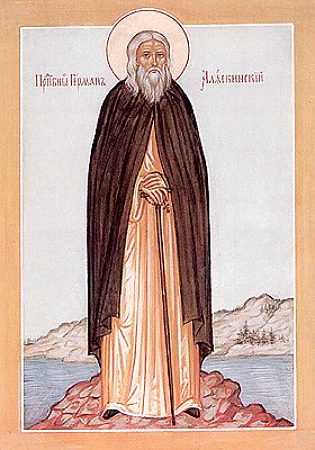
Herman of Alaska was a Russian Orthodox monk and missionary to Alaska, which was then part of Russian America. His gentle approach and ascetic life earned him the love and respect of both the native Alaskans and the Russian colonists. He is considered by many Orthodox Christians to be the patron saint of North America.

Sergey Anatolyevich Kuryokhin was a Russian composer, pianist, music director, experimental artist, film actor and writer, based in St. Petersburg, Russia. He was an influential figure in the Saint Petersburg music scene of the 1980s and early 1990s. He was the former keyboardist for the rock band Aquarium.

David Ivanovich Grimm was a Russian architect, educator and historian of art specialising in the Byzantine Empire, Georgia and Armenia. Grimm belonged to the second generation of Russian neo-Byzantine architects and was the author of Orthodox cathedrals in Tbilisi, Chersonesos and smaller churches in Russia and Western Europe. Grimm was a long-term professor at the Imperial Academy of Arts and chaired its department of architecture in 1887–1892.
Herman Augustovich Laroche was a Russian critic of classical music and composer who was renowned throughout Moscow.

Vladimir Ivanovich Kovalevsky was a Russian statesman, scientist and entrepreneur. He was the author of numerous articles and works on agricultural themes. From 1892 to 1900, he was the director of the Commerce and Manufacturing Department of the Ministry of Finance of the Russian Empire, and one of the fathers of the concept of Russian protectionism. From 1900 to 1902, he was the Deputy Minister of Finance. From 1906 to 1916, he was the chairman of the Russian Technical Society. Kovalevsky was one of the creators of the Saint Petersburg State Polytechnical University and the Institute of Plant Industry in Leningrad.

German Alexandrovich Lopatin was a Russian revolutionary, journalist, writer and poet.

Herman of Solovki was one of the founders of the Solovetsky Monastery. In total, he lived in Solovetsky Islands, at the time, the most remote location, for about 50 years.
The year 1928 was marked by many events that left an imprint on the history of Soviet and Russian Fine Arts.

Adrian Victorovich Prakhov was a Russian art critic, archaeologist and art historian.
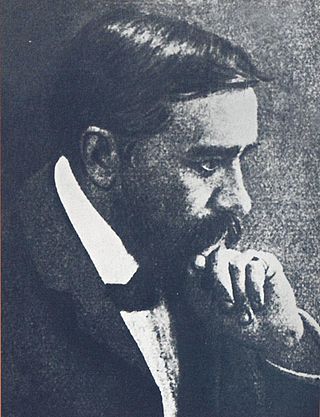
Sergey Sergeyevich Solomko was a Russian painter, watercolorist, illustrator and designer.
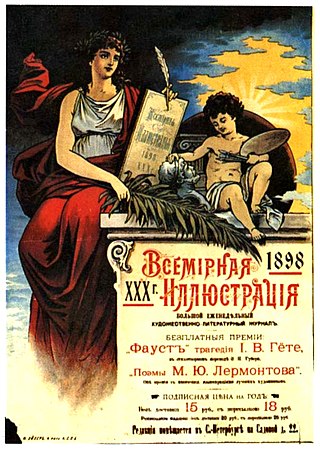
Vsemirnaya Illyustratsiya was a Russian weekly magazine founded by German Goppe and published by his own publishing house in Saint Petersburg in 1869–1898.

"Fat and Thin" is a satirical short story by Anton Chekhov, first published in the No. 40, 1 October 1883 issue of Oskolki magazine, signed A. Chekhonte. It was included into Chekhov's 1886 collection Motley Stories published in Saint Petersburg and later in the Volume 1 of the Adolf Marks's Chekhov's Collected Works (1899).
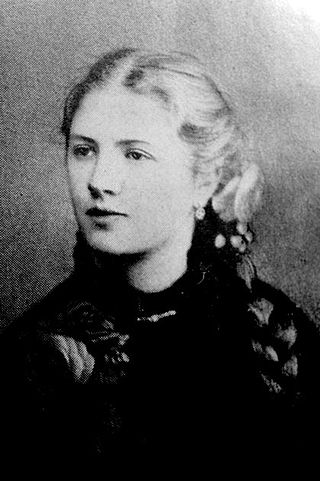
Lydia Alexeyevna Avilova was a Russian writer and memoirist, best known for her book A.P. Chekhov in My Life, published posthumously in 1947.
Mikhail Yurievich German was a Soviet and Russian writer, art historian, doctor of art criticism, professor, and member of the International Association of Art Critics (AICA), International Council of Museums (ICOM), International PEN Club, Union of Russian Writers, Union of Journalists of St. Petersburg and the International Federation of Journalists (IFJ). He was a leading researcher at the Russian Museum.

"The Cattle-Dealers" is an 1887 short story by Anton Chekhov.
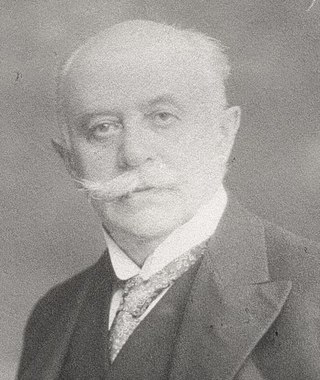
Lev Philippovitch Wolkenstein was a Russian jurist, lawyer and cadet.

Carl Hermann Salemann was a Russian Iranist scholar. He was an academician of Saint Petersburg Academy of Sciences (1895) and a director of Asiatic Museum of the Academy of Sciences (1890—1916).

Herman Obuhov is a Soviet dissident, author of five books and six screenplays, public figure, member of the International Academy of Information Science.

Florian Hermann was a composer of German-Polish origin active in the Russian Empire. Although he authored many works, Hermann is primarily notable as an author of the melody used in the music for the well-known Russian song "Dark eyes". Very little is known about Hermann, Russian publications occasionally describe him as a French or Austrian composer.
















